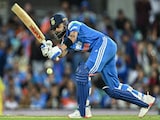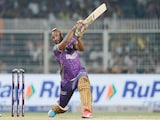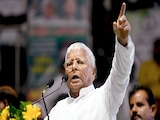As the notification for both phases of Bihar elections is issued and nominations open, the state finds itself at a crucial political crossroads. The electoral battle is shaping up to be one of the most complex and unpredictable in recent Bihar history. Multiple alliances, shifting voter demographics, welfare schemes, caste calculations, and the emergence of new political players have created a multifaceted contest where traditional voting patterns may no longer hold.
This comprehensive analysis examines the eleven critical X-factors that could ultimately determine who forms the next government in Bihar.
1. Alliance Chemistry
Both big coalitions - the National Democratic Alliance (NDA) and the Mahagathbandhan (MGB) - are grappling with internal complications arising from the addition of new allies and the delicate balancing act of seat-sharing arrangements.
The addition of the Lok Janshakti Party (LJP) and the Rashtriya Lok Morcha (RLM) has introduced new tensions, especially given the deep-seated trust deficit between the LJP and the Janata Dal (United) (JD-U). In the 2020 elections, while the JD(U) managed to transfer approximately 70% of its votes to BJP candidates, the BJP could reciprocate with only a 55% transfer.
The balance 15% found an outlet in the LJP, which had chosen to field candidates only against the JD(U), ostensibly at the behest of the BJP. This time around, the Jan Suraaj Party (JSP) might play a similar role, potentially siphoning off votes that would otherwise flow within the alliance.
The MGB faces its own set of complications with the inclusion of the Vikassheel Insaan Party (VIP), the Jharkhand Mukti Morcha (JMM), and a faction of the LJP. They have not yet formalised seat-sharing arrangements, with Congress flexing muscles after the success of its Voter Adhikar Yatra.
The ability of both alliances to maintain cohesion, project unity, and ensure their supporters vote for alliance candidates regardless of party affiliation will be one of the defining factors of this election.
2. Leadership Personalities
Tejashwi Yadav of the Rashtriya Janata Dal (RJD) currently leads the Chief Ministerial race across multiple surveys. His appeal, though, is largely restricted to the Muslim-Yadav (MY) core vote bloc and a section of youth. A close second is Nitish Kumar, the incumbent Chief Minister whose long tenure in Bihar politics has earned him laurels, but against whom fatigue is now setting in. Prashant Kishor, the political strategist-turned-politician, is at the third position, while Chirag Paswan and Samrat Choudhary round out the top five.
However, according to a VoteVibe survey, only 15% of voters indicate that they base their decision primarily on the Chief Ministerial candidate. A slightly higher number, 17%, consider the Prime Ministerial face while voting, while 23% are driven by development and issues. The remaining voters are influenced by a complex mix of factors such as caste, religion, freebies, and local issues.
Nitish Kumar's ratings have declined compared to 2020, with this lost ground being captured primarily by Prashant Kishor and others. Even Tejashwi Yadav has seen a marginal decline in his popularity, largely attributed to targeted attacks by Prashant Kishor on his educational qualifications.
The NDA's strategy of presenting a bouquet of leaders, each bringing their own caste and community votes, stands in contrast to the MGB's more centralised leadership around Tejashwi. Samrat Choudhary appeals to the Kushwaha community (4%), Chirag Paswan to the Paswan community (5%), and Jitan Ram Manjhi to his own Mahadalit supporters (3%). On a combined basis, NDA leaders exceed MGB leaders' ratings for chief ministerial candidates.
3. Pro-Incumbency vs Anti-Incumbency
Bihar finds itself in a unique situation where sentiments are almost evenly split between those favouring and those opposing the incumbent government. VoteVibe survey data reveals that 48% of people see strong anti-incumbency while 32% express pro-incumbency sentiments, with 14% remaining neutral.
Typically, clear anti-incumbency or pro-incumbency waves make election outcomes more predictable. However, when the state is divided almost equally, the ability to consolidate and mobilise vote blocs becomes paramount.
While there is significant dissatisfaction with the current government, this discontent is fragmented across multiple opposition players - primarily between the MGB and the emerging Jan Suraaj Party. If the MGB can successfully consolidate the anti-incumbency sentiment, it has a clear path to victory.
Meanwhile, pro-incumbency levels have risen from 18% in July to 34% in September, primarily due to the aggressive rollout of welfare schemes in recent months. The key questions to ask here are whether welfare schemes announced in the immediate pre-election period make up for grievances accumulated over 20 years, and, two, whether the opposition can effectively consolidate anti-incumbency votes.
4. The Welfare Economy
The NDA government has embarked on a sops spree. The five identified cohorts - youth, women, farmers, senior citizens, and labourers - have each been offered an array of schemes. The strategy is to shift the narrative from long-term development failures to short-term relief measures.
These include an increase in pension for senior citizens and widows, unemployment allowance for youth, a Rs. 10,000 grant for women to start businesses, 35% reservation for domiciled women in police recruitment, Rs. 5,000 for labourers, 125 units of free electricity for all, and various other initiatives.
This welfare-focused approach must be understood against Bihar's economic backdrop. The state has the lowest per capita income in India, faces significant rural and agricultural distress, and continues to grapple with chronic underdevelopment. Despite significant development work during Nitish Kumar's tenure, Bihar lags severely in Human Development Index (HDI) indicators due to low base effect.
Most strikingly, the state's per capita income remains only one-third of the national average - the same relative position it held in 2005 when Rabri Devi's government lost power. While absolute numbers may have grown, the state hasn't closed the gap with the rest of India - a point that opposition parties are now highlighting.
5. Modi vs Rahul
This Bihar election marks a significant departure from polls in the past in one important aspect: the prominent entry of national leaders into the campaign discourse. With both Nitish Kumar and Tejashwi Yadav seeing their popularity ratings decline compared to 2020, the election has increasingly become a contest between national political formations as well.
Effectively, the election is being framed as Nitish Kumar-Narendra Modi versus Tejashwi Yadav-Rahul Gandhi. According to C-Voter data, Modi maintains a 52% Prime Ministerial rating compared to Rahul Gandhi's 41% popularity. However, the gap is narrowing due to Gandhi's Bharat Jodo Yatra and Voter Adhikar Yatra in Bihar. His appeal appears stronger among marginalised sections, youth, minorities and SC/ST voters. While Tejashwi commands strong support among Yadavs and Muslims, the Congress's traditional appeal among Scheduled Castes and its recent gains among sections of OBC and EBC voters could provide the additional percentage points needed for victory.
The NDA's counter-strategy relies heavily on Modi's popularity and his government's welfare schemes at both national and state levels. The hope is that Modi's charisma and the BJP's organisational strength can compensate for any erosion in Nitish Kumar's ratings.
6. The Women Voters
Women have emerged as kingmakers in recent elections across India, and Bihar is no exception. What makes them particularly influential is their distinct set of needs, aspirations, and issues that cut across traditional caste lines.
As many as 1.21 crore women - 35% of all women voters - have received the Rs. 10,000 benefit under Mahila Rozgar Yojana. And, since each family typically has about three voters, these schemes effectively touch 50% of the entire vote base of 7.42 crore. This multiplier effect makes women-focused welfare initiatives particularly potent, with both NDA and INDIA seeing its success seen in Madhya Pradesh, Maharashtra and Jharkhand.
Nitish Kumar has long cultivated this vote bank through welfare schemes. His track record includes bicycle distribution, which improved girls' school attendance, the Jeevika Didi initiative promoting women's self-help groups, reservation for women in panchayat elections, and widow pensions. The current pre-election announcement of new schemes is designed to reinforce and expand this base.
What makes women voters even more crucial is their turnout rate. In recent Bihar elections, women's turnout has exceeded men's by approximately 5%. In 167 seats where women turned up in more numbers than men in 2020, the NDA won 99 seats, while 61 were bagged by the MGB.
The opposition faces a challenge here. Breaking the bond between Nitish Kumar and women voters requires either discrediting his welfare credentials or offering something substantially more attractive - something it is attempting to do by promising Rs. 2,500 per month to women rather than a one-time assistance like the NDA's.
7. The Youth Quotient
The youth demographic represents both the greatest hope and the greatest challenge for Bihar's political class. Voters in the 18-29 age group constitute 25% of the vote base, and if you extend the definition to include those up to 35 years, this cohort represents around 35% of the electorate.
This generation has a fundamentally different perspective on Bihar politics. Unlike older voters, they don't carry memories of the so-called "jungle raj" of the 1990s, a period often invoked by Nitish Kumar to contrast his governance with Lalu Prasad Yadav's regime. For them, the relevant comparison isn't between the Bihar of the day and the chaotic 1990s, but between Bihar and other progressive states.
Unemployment and migration are the defining issues for this demographic. Bihar continues to experience massive outmigration of youth seeking opportunities elsewhere. The promise of "10 lakh jobs" made by Tejashwi Yadav in 2020 resonated powerfully with this constituency.
They exhibit strongest anti-incumbency among youth voters, but the benefit of this sentiment is split between Tejashwi Yadav and Prashant Kishor. The latter has gained traction among educated youth through his social media presence and his positioning as a new-age, development-focused leader. On the other hand, Tejashwi's promise in this election - to provide a government job to every household - is mathematically impractical given Bihar's approximately 2.5 crore households that don't have a government job. However, as an emotional rallying cry, his promise speaks to the desperation for attaining secure employment. Whether voters evaluate this promise on its practical feasibility or its emotional resonance could significantly impact electoral outcomes.
8. The Caste Combinations
In Bihar, the saying goes, "caste is cast in stone". As many as 57% of voters prefer a leader from their own caste, per an Azim Premji University study. The traditional alignment is Upper Castes, Non-Yadav OBCs, EBCs, Mahadalits, and Paswans - collectively representing 68% of voters - predominantly supporting the NDA. Muslims and Yadavs, constituting 32% of the electorate, form the core of the MGB.
However, this seemingly comfortable majority for the NDA isn't as solid as it appears. That's why the 68% support base translated into just a 37% vote share for the NDA in 2020. The Extremely Backward Classes (EBCs) and Scheduled Castes emerge as kingmakers here. Hindu EBCs represent 26% of the electorate, while SCs constitute 20% of the total vote base. The MGB gained popularity among SC voters during the 2024 Lok Sabha elections due to its messaging around constitutional threats, demonstrating the kind of fluidity possible in caste alignments. The MGB's path to victory requires making significant inroads into either the EBC or the SC vote - ideally, both. Their strategy is to project Mukesh Sahni and Rajesh Ram as possible names for deputy chief ministers, for EBC and SC outreach, respectively.
The NDA's advantage lies in its diverse caste leadership. By having prominent leaders from multiple castes - Samrat Choudhary (Kushwaha), Chirag Paswan (Paswan), Jitan Ram Manjhi (Manjhi), Vijay Sinha (Upper Caste) and Nitish Kumar (Kurmi) - they can appeal to specific communities.
9. The Dalit Vote
Dalits, who constitute 20% of Bihar's electorate, have multiple sub-castes, each with distinct political preferences and often antagonistic relationships with each other. For instance, the Ravidas community and Paswans each represent about 5% of voters, while the Manjhi community accounts for approximately 3% of the vote base. The Paswan and Manjhi communities have traditionally aligned with the NDA, with Chirag Paswan and Jitan Ram Manjhi serving as their representatives.
The Ravidas community has shown some indication of potentially moving toward the MGB. Of the 40 seats reserved for SC/STs, the NDA won 22 and the MGB 18 in 2020. The battle for these seats will be intense, as they could determine the overall majority. An interesting trend is the gravitation of educated and youth SC voters toward the Congress/MGB. The Congress's emphasis on constitutional protections, reservation policies, and social justice has resonated with younger, educated Dalits, who see these issues as fundamental to their progress. Prashant Kishor is also making inroads into SC votes through promises of improved education and healthcare, development, and class-based politics, rather than traditional caste-based appeals.
10. The Muslim Vote
Muslims constitute approximately 18% of Bihar's population, with their concentration varying significantly across regions. In Seemanchal, the northeastern region of Bihar, Muslims constitute about a quarter of the state's population. Historically, around 75% of Muslim voters have supported the MGB, making them a crucial component of the opposition's electoral arithmetic.
However, this seemingly solid support base faces challenges from multiple directions. The All India Majlis-e-Ittehadul Muslimeen (AIMIM) won five seats in the previous election, demonstrating that a portion of Muslim voters are willing to support explicitly Muslim-focused parties. Prashant Kishor's Jan Suraaj Party is also making some inroads into this vote bank, particularly among younger, educated Muslims attracted by his development-focused messaging.
The question of representation has become increasingly important. Despite being 18% of the population, Muslims hold only about 8% of legislative seats - a gross underrepresentation that has led to community discontent. This representation gap is driving some Muslims toward the AIMIM, which promises dedicated Muslim representation rather than relying on secular parties.
However, opinions are divided within the community about the AIMIM's role. Some view it as a necessary assertion of Muslim political identity and a way to ensure their issues receive attention, while others see it as a vote-cutter, something that ultimately helps the NDA by splitting opposition votes in crucial constituencies.
In North Bihar, where 75% of the state's Muslims reside, polarisation is a significant factor. Communal tensions - when they arise - can consolidate Muslim votes more firmly behind secular parties, but they can also mobilise counter-voting patterns. In 2020, of the 24 seats in Seemanchal, the NDA won 12 due to this phenomenon.
The MGB's strategy relies on maintaining its traditional Muslim support while addressing concerns about representation and community-specific issues. A fragmented Muslim vote could cost the MGB crucial seats.
11. The PK Factor
Perhaps no single factor is as unpredictable as the impact of Prashant Kishor and his Jan Suraaj Party (JSP). The political strategist-turned-politician has captured the imagination of a section of Bihar's voters, particularly the educated, middle class, and urban citizens.
Kishor's strategy appears aimed at emerging as a third force in Bihar politics. He has successfully consolidated a portion of the "others" category in political surveys. The impact of the JSP was visible in recent by-polls, where it damaged the MGB's prospects by bagging a 10% vote share and reducing the MGB's tally from 3-1 to 0-4, which ultimately benefited the NDA.
More significantly, Kishor has dented Tejashwi Yadav's popularity among youth through sustained criticism of his educational qualifications and leadership capabilities. Simultaneously, he has challenged the NDA's credibility among educated, middle-class, upper-caste voters by highlighting corruption allegations and governance failures.
The critical question is whether the JSP will act as a spoiler - just as the LJP affected outcomes in 2020 - or emerge as a genuine third force. The numbers suggest that a spoiler role is more likely in the immediate term. Analysis shows as many as 83 seats have victory margins of 5% or less. In these tightly contested constituencies, even a modest JSP vote share could swing outcomes decisively in favor of one alliance or the other.
Kishor's hope apparently is to force a hung assembly, where neither alliance has a clear majority. In such a scenario, the JSP could emerge as a kingmaker. The challenge for it is converting survey interest and social media buzz into actual votes and seats.
An Election of Wafer-Thin Margins
As Bihar heads to the polls, the outcome appears genuinely uncertain. The eleven factors analysed above interact in complex ways, sometimes reinforcing each other, sometimes pulling in opposite directions.
A 2-3% swing in women's votes, a consolidation or fragmentation of youth votes, the success or failure of welfare schemes in changing perceptions, the degree of vote transfer between alliance partners - any of these could determine whether the NDA retains power or the MGB stages an unusual comeback.
(Amitabh Tiwari is a political strategist and commentator. In his earlier avatar, he was a corporate and investment banker.)
Disclaimer: These are the personal opinions of the author















